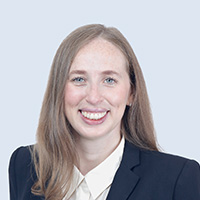Raj Sharan: Hello everyone and welcome back. Previously we covered key accounts, inside sales and customer service. Today we will focus on the specialization layer, market and or product specialists. This may include workflow specialists as well. Over the past few years, you have heard us describe an industry move towards more generalist account manager. But more recently, teams have focused on making sure they’re still bringing the right mix of specialty. Right now, the industry average of sellers to specialists is about 5.4 to 1. And we do expect this to change very quickly to below 5 to 1. As 50% of the survey participants who were investing in headcount this year said it will be in the specialist’s role. The second specialist role is the application scientist, and we are seeing a strong evolution of the FAS role now supporting more of the post-sales experience. So instead of using the field service engineer to install and train, the application scientists is supporting instrument configuration and performing demos and the in-person training to drive immediate adoption. And so we’ll talk a lot more about this. And all around we are seeing an increase in FAS to organic seller across all regions from 2020 to 2024. So, Anna, what else are you hearing from customer interviews?
Anna Predleus: One consistent theme that we hear from our clients when they refer to their customers is that their customers want to speak to specialists to solve their workflow issues. Buyers also understand these specialists play a very different role in the buyer journey. Across the board, one area of investment is the specialization layer. The biotech segment, especially the emerging biotech’s, is expecting to return to long term growth. Companies want to make sure they capture their fair share of the market. To win, leaders have mentioned leading with science and customer conversations. However, companies have to be able to do this at scale. Some ways they are doing this is through one leveraging marketing campaigns two having technical specialists that are remote help with the sales process at critical junctures, and three through having digitally enabled sellers, which will cover more when we discuss AI. These are just some ways to drive the specialization without adding that additional headcount. Raj, can you walk us through? Market specialists and how they’re evolving?
Raj Sharan: Yeah, definitely. But first let’s talk about where companies are making these investments. Where is this limited headcount increase in specialties taking place? Firstly, no surprise, it’s in cities that tend to be hubs. Boston, Bay area for biotech’s that are in recovery phase. Same with Ireland and South Korea. India is seeing significant macroeconomic growth and that is driving the life science growth as well. Secondly, beyond biotech, applied markets such as batteries, semiconductor, pfast testing, etc. are seeing strong growth, albeit from a smaller base. To win in these markets, companies are deploying specialists who can speak the language of the customer. There are two types of specialists that are new or evolving significantly. Firstly, the market specialists. These are hunter sellers who are focused on specific end markets or accounts where companies may not have had success in the past. The second is the field application scientist. We’ll cover in more detail in the next section. As you’ll see, companies are also thinking of innovative ways of bringing specialization to customers. Whether that be innovation centers, virtual labs, webinars with KOLs. One really cool thing, soon companies will have an AI driven avatars answer customer questions. Initially these will be limited, but over time these avatars will have expanded capability to engage for longer duration and with a lot more depth to the conversation and science before having to loop in a person. And how about the FAS? How is that role evolving?
Anna Predleus: The role of the field application scientist is seeing a major transformation. They’re becoming a very important part of the sale if they weren’t so already. Firstly, buyers care a lot about their application and research workflows more than they do about their product features. So product specialists are becoming less important relative to the past. Instead, buyers want to talk to the FAS who help them with their specific research needs. Once buyers purchase, they don’t want to have to deal with a second set of people from the same vendor who may come and install the instrument or help with their research with reagents and consumables. In our interviews, our customers indicated that customers have a strong preference for the same FAS who was involved in presales to also provide immediate post-sale support. Now this can get very expensive, so companies have to judiciously deploy FAS as a post sales environment to select customers or select opportunities. Companies also need to figure out the coordination issue. How is the FAS work structured? How are FASs is requested by teams, including sales as well as post-sales teams. Raj, can you walk us through a real-life example from an engagement that you recently led?
Raj Sharan: Yeah, and a real example, we work with a high-end instrument company. They had a split model. The FAS were not involved in any of the post sales activity. The FSE were doing the install. However, when we interviewed their customers, consistently we heard that was a big challenge. It also limited the consumables and reagent sales. So, we designed a model where the FA would do the unboxing and the initial onboarding and training. They knew what the customer wanted. Having been part of the sales process, they then handed off the to the FAS for ongoing maintenance and support. So this led to better customer outcomes, higher NPS, and it also led to significant consumables and reagents expansion and service contract renewals. So the vendor was able to maximize customer lifetime value. So as you’ll see here, we are highlighting that you still need the FSE. They don’t go away. They’re just working very closely with the FAS in that immediate post sales environment to drive the customer success. You will see that support continues to be primarily driven by the post-sales service team. Companies are conscious and as you said, about not getting the FAS bogged down in a lot of the post-sales activity. Companies do want the FAS to drive expansion at accounts, and that’s how you maximize the customer lifetime value. All right. That wraps it for part two of our Live Science’s coverage trends video. Thank you everyone for tuning in. The Alexander Group offers the community many ways to connect, engage and accelerate performance led growth initiatives. The Alexander Group has many events and studies. Please reach out to Anna or myself to learn more. Thank you.






